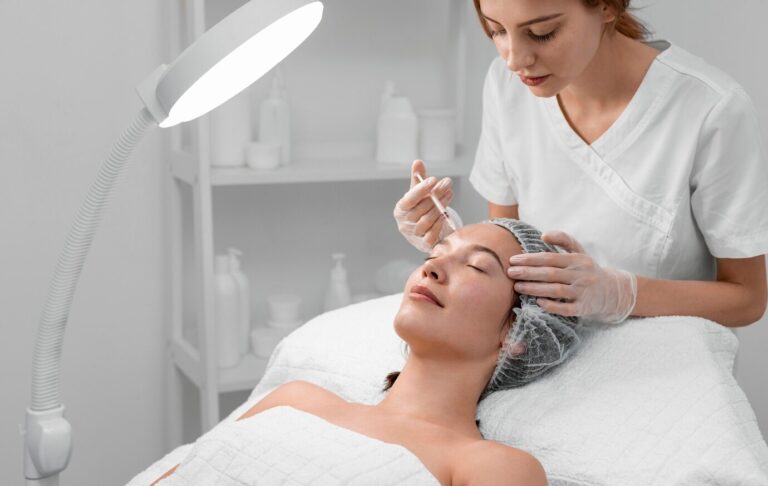Microneedling has an array of skin benefits, such as reducing acne scars and fine lines and improving overall skin texture. The frequency of when someone can do microneedling depends on various factors, including skin type, skin concerns, and individual goals. A dermatologist can explain the process and when it should be done, and create a personalized plan.
How Does Microneedling Work?
Microneedling works by creating controlled micro-injuries on the skin’s surface. This stimulates the body’s wound-healing processes and activates the production of collagen and elastin. It results in rejuvenated skin with reduced scars and enhanced glow. After the procedure is over, one may experience redness, bruising, and light pinpoint bleeding. These side effects should dissipate within a day if all aftercare instructions are followed.
What Determines the Frequency of Treatments?
If one is addressing specific skin issues like acne scarring or deep wrinkles, skincare professionals may recommend a series of treatments, typically spaced about four to six weeks apart. This interval allows the skin appropriate time to heal between sessions while maintaining momentum in the production of collagen. For those seeking general skin maintenance, undergoing microneedling sessions every three to six months might suffice. This schedule helps maintain skin texture and elasticity consistently over time, without overwhelming the skin’s natural repair capabilities.
What Affects the Frequency of Treatments?
The skin’s response to microneedling can vary greatly from person to person. Those with sensitive skin may need longer intervals between sessions to fully recover, while individuals with more resilient skin can potentially handle a more frequent schedule. Age also plays a pivotal role in determining the appropriate frequency of microneedling treatments. Younger skin tends to regenerate faster, and those in their 20s or early 30s may not need treatments as frequently. For those with mature skin, they might need to seek more routine sessions to combat the signs of aging.
The specific device and needle depth used during the procedure can also affect the frequency of sessions. Professional microneedling treatments go deeper into the dermis and typically require more downtime but offer more substantial results. These treatments might be recommended at less frequent intervals compared to home microneedling tools, which are generally less invasive and can be used more regularly.
How Do You Determine the Right Plan?
Consultation with a dermatologist or a certified skincare professional will help you establish a personalized microneedling plan. They can provide guidance based on an individual’s specific skin condition, medical history, and desired outcomes. It’s also necessary to follow aftercare instructions post-session, including avoiding sun exposure, using gentle skin products, and keeping the skin hydrated to optimize the results and minimize potential side effects.
Talk To a Dermatologist About Microneedling Today
The ideal frequency of microneedling varies by individual and is tailored to their unique skin type, concerns, and desired results. Whether targeting particular issues or maintaining youthful skin, ongoing collaboration with professionals and monitoring the skin’s response will help determine the most effective microneedling schedule. Get in touch with a dermatologist today to discuss your options.

